This season of Formula One racing has been incredible, with so many records broken including most pole positions and overtaking in a single race compared to past years thanks to the new rules outlined by the sport’s governing body to provide a better spectacle.
The introduction of the Drag Reduction System (DRS), an adjustable rear wing designed to increase straight-line speed worked a treat to aid overtaking. Plus the combination of the KERS and the fast degrading Pirellis – the new tyre supplier for the sport – made the racing more exciting for the drivers, teams and fans.
During the initial stages of pre-season testing, the drivers were very vocal about the new control tyre from Pirelli. The wear rate was much faster than the Bridgestones but it was designed in this way to aid the show. By having fast-degrading tyres, it lead to a huge variation in performance and strategies during a race and this season it did the job exceptionally well.
With the ban of double diffusers, the teams faced a problem on how to recover lost downforce but thanks to the creative genius of Adrian Newey and his talented designers, Red Bull Racing found a new method of using the car’s exhaust to increase grip.
The off-throttle blown diffuser increases downforce by keeping the engine spinning while the car is under braking, channelling hot exhaust gasses over the diffuser and allowing for higher cornering speeds. The Red Bull RB7 perfected this concept during pre-season testing, while McLaren tried a complicated octopus exhaust system, which made the MP4-26 unstable and difficult to drive.
The Renault R31 tried a different concept, which featured a forward-blown exhaust fitted just in front of the sidepods. This innovative design was very effective in generating aero grip and to underline its performance, Robert Kubica set the fastest lap on the last day of pre-season testing. But a few days later, Kubica suffered his horrendous rally accident…
Driver changes became a major factor in 2011 with many teams decided to go for experience, talent and most importantly, very good cash support. In the case of racing experience, Renault hired Nick Heidfeld to replaced the injured Robert Kubica while DTM champion Paul di Resta joined Force India. As for having a great cash flow to aid the team, Sergio Pérez was selected at Sauber thanks to his strong connection with the richest man in the world.
Initially the first race was in Bahrain, but following days of political unrest, the sport’s governing body decided to postpone the event and shifted the opening round of the championship to Australia.
It was at Melbourne that the true pace of Red Bull Racing was revealed. Defending world champion Sebastian Vettel took his first pole position of the season by a margin of eight tenths of a second and went on to win by a comfortable margin over Lewis Hamilton and Vitaly Petrov. For Hamilton, the turnaround by McLaren following its disastrous pre-season testing in which the octopus exhaust system prove a nightmare for the engineers, that the team simply copied Red Bull’s exhaust to gain competitiveness! As for Petrov, finishing on the podium was a rich reward for Renault followed a difficult pre-season.
The same cannot be said for Hispania. The pace of the F111 was hopeless and both Narain Karthikeyan and Vitantonio Liuzzi failed to qualify after falling outside the 107 per cent rule. As for the Saubers of Sergio Pérez and Kamui Kobayashi, both cars were disqualified for a technical infringement when their cars failed a post-race scruitineering inspection.
Vettel continued his title defence in Malaysia, taking pole from Hamilton in the final moments of the qualifying session by just one tenth of second. In the race, Sebastian scored his second win of 2011 ahead of Jenson Button and Nick Heidfeld. This was Renault’s second successive podium. As for Lewis Hamilton, this was the start of his infamous on-track clash and in Malaysia; he was given a post-race time penalty for weaving while battling with Fernando Alonso.
Vettel once again took the top spot in China, while his team-mate Mark Webber made a poor tyre choice and was eliminated from Q1 for the first time in two years! Vettel made a poor start in the race and was quickly overcome by the McLarens of Button and Hamilton. Button and Vettel pitted together, but Button made a bizarre mistake, mistakenly pulling up in the Red Bull pit-box, and allowing Vettel to get back out onto the circuit in front of him. The lead changed several times as the race progressed before Vettel settled into position, but on deteriorating tyres, he was caught and passed by Hamilton four laps from the flag. Having started in P18, Mark Webber recovered to achieve the third place.
Sebastian Vettel earned his fourth pole of the season in Turkey, becoming the first driver to start the first four races on pole since Mika Häkkinen in 1999. Vettel dominated the race from lights-to-flag, ahead of Webber and Alonso, who gained Ferrari’s first podium finish of the year. McLaren struggled with a series of slow pit-stops, whilst the promise shown by Mercedes GP in qualifying was lost in the race when their cars were fuel-heavy and running on the harder prime tyre compound.
In that Turkish Grand Prix alone, there were many overtaking manoeuvres than any races from last year’s championship combined! The position of the DRS zone – selected by the sport’s governing body to aid overtaking and in this case, the back straight on the Istanbul Park circuit – allowed the drivers to pass and re-pass each other thanks to KERS and DRS. Although some questioned that it made the racing artificial but at least we don’t get processional races where faster cars get stuck behind slower cars.
Mark Webber ended Vettel’s run of consecutive pole positions in Spain, but it was the fast-starting Fernando Alonso who led the field into the opening car to the wide delight of the Spanish fans! Alonso led much of the early phase of the race but was eventually overtaken in the pits by Vettel, and slipped down the order to finish a lap behind as Ferrari struggled with Pirelli’s brand-new “extra hard” compound… Vettel went on to win the race, but Red Bull’s one-second advantage in qualifying was gone by the time of the race with Lewis Hamilton spending most of his time glued to the back of Vettel’s gearbox! After making a poor start and slipping down to tenth place, Jenson Button used a three-stop strategy to recover to third place.
The Monaco Grand Prix was marred by a string of accidents throughout the weekend that saw two drivers hospitalised. Sergio Pérez crashed heavily at the Nouvelle Chicane in qualifying and suffered a concussion, while Vitaly Petrov was briefly knocked unconscious in a five-car pile-up late in the race that saw the red flags waved and the race stopped. Sebastian Vettel achieved both pole position and the race win ahead of Fernando Alonso and Jenson Button, who had been rapidly catching the race leader at the time of the race stoppage thanks to a fresh set of Pirellis.
It was in this race that Lewis Hamilton came to blow with Felipe Massa. A late dive up the inside of his Ferrari rival at the hairpin earned the McLaren driver a drive-through penalty, which was compounded by putting Pastor Maldonado into the barriers at Ste Devote later in the race. When interviewed by the world’s press, his quip about the regularity of his visits to the race stewards – invoking Ali G’s “is it ‘cos I is black?” line – was an ill-advised joke rather than malicious, but poured fuel on the fire.
Vettel took his sixth pole of the season in Montreal, with the race severely affected by rain. The early stages of the Canadian Grand Prix saw Jenson Button and Lewis Hamilton collide on the pit straight, and Button earning a drive-through penalty for speeding behind the safety car after it was deployed to retrieve the stricken McLaren of Hamilton.
On lap twenty-five, the race was stopped for two hours in the face of a torrential downpour that made the Circuit Gilles Villeneuve undriveable. When the race was finally resumed, a narrow dry line began to appear around the track, and Button began to work his way through the field, having run as low as twenty-first and last place after his penalty.
With four laps to go, Button had passed Mark Webber and Michael Schumacher for second position and was catching Vettel at a rate that meant he would only catch the championship leader on the final lap. Pushing absolutely to the limit, Vettel made a mistake, running wide and off the dry line on the final lap. That moment allowed Button the victory and it was one of most exciting ends to a Grand Prix for quite a while.
Schumacher matched his best race result since returning to the sport, with fourth position. While at Sauber, Sergio Pérez elected not to compete after reporting that he felt unwell during the first practice session, and he was replaced by Pedro de la Rosa. The Spaniard recorded P12 in only his Formula One appearance.
Pirelli’s medium-compound tyre made its race debut in Valencia, which once again saw Vettel on pole position. There was much speculation about the potential for the field to be shaken up by the introduction of engine mapping bans, but the reigning champion led for most of the race, only ceding the lead when called in to pit. Vettel comfortably gained his sixth victory of the season when the leaders moved onto the medium compound tyres, with Fernando Alonso demonstrating that the Ferrari 150° Italia was unable to use the medium tyres as efficiently as the Red Bull RB7. With all twenty-four cars finishing the race, Hispania Racing’s Narain Karthikeyan became the first driver in the sport’s history to finish a Grand Prix in twenty-fourth position as the race broke the record for the most classified finishers.
Uncertainty over rule changes and exemptions concerning the use of off-throttle blown diffusers dominated the off-track discussion at the British Grand Prix. Mark Webber started from pole position in the race. However, Sebastian Vettel took the lead on the opening lap. A mistake from Red Bull in the pits allowed Fernando Alonso to take control of the race, which he went on to win by sixteen seconds, his first victory since the 2010 Korean Grand Prix and a perfect way to celebrate the Scuderia’s 60th anniversary.
Webber caught Vettel in the dying stages of the race, but was given a late team order to maintain his position, and the Australian finished third behind his team-mate. Felipe Massa was similarly catching Lewis Hamilton, whose progress had been hampered by an order to conserve fuel, for fourth position and the two made contact in Club corner, forcing Massa to run wide over the finish line. Jenson Button fell from second to fifth position in the championship when a wheel nut was improperly attached to his car during his final pit-stop, forcing his retirement from the race.
Webber achieved his second successive pole position in Germany, while Hamilton denied Red Bull a front-row lock-out by qualifying second. Vettel was third, the first time he had qualified outside the front row since the 2010 Italian Grand Prix. Hamilton took the lead going into the first corner of the race, and the early stages of the German Grand Prix were marked by the drivers attempting to find grip on an unusually cold circuit. As Hamilton, Alonso and Webber pulled away, Vettel struggled to match their pace following a spin at Turn Ten. Michael Schumacher had an identical episode at the same corner a few laps later, whilst Sebastien Buemi and Nick Heidfeld collided at the chicane, ending Heidfeld’s race. There were multiple lead changes between Hamilton, Webber and Alonso, with Hamilton capitalising on a slow in-lap by Alonso and a strategy error from Red Bull to secure victory. Alonso finished second, with Webber third, while Sebastian Vettel stole fourth away from Felipe Massa when the two drivers pitted on the final lap.
Vettel returned to the front in qualifying by setting pole position in Hungary. However, Lewis Hamilton qualified second and was able to save an extra set of softer option tyres for the race. After mixed conditions wreaked havoc in the support races, the Hungarian Grand Prix started with a wet surface. Vettel established an early lead, but was soon passed by Hamilton and Jenson Button as a dry line appeared. The positions remained constant through the halfway point of the race while Team Lotus experienced their second double-retirement in three races and Nick Heidfeld’s Renault exploded after a prolonged pit stop.
A mid-race shower on the lap 40 led to Hamilton spinning, forcing Force India’s Paul di Resta off the circuit and allowing Button to close the gap. The two McLaren drivers traded places several times in the greasy conditions, with Hamilton leading long enough to give him the first strategy call within the team. He opted to swap to the intermediate tyres, but the track started to dry out and he was given a drive-through penalty for forcing di Resta off the circuit, taking him out of contention for a podium finish. Jenson Button went on to win the race, his 200th Grand Prix start and the scene of his maiden victory ahead of Vettel in second and Fernando Alonso. Hamilton recovered from his penalty to take fourth position from Mark Webber, whilst Felipe Massa – who had out-qualified Alonso for the first time since the 2010 Belgian Grand Prix – was the final car classified on the lead lap in sixth place.
The Belgian Grand Prix marked twenty years since Michael Schumacher’s Formula One debut, but the seven-time world champion had a difficult start to the weekend when he lost a wheel on his out-lap in qualifying, sending him to the back of the grid.
Bruno Senna replaced Nick Heidfeld at Renault, qualifying seventh in variable conditions on his return to Formula One. However, his success was short-lived when he crashed into Jaime Alguersuari at the La Source hairpin on the first lap, ending Alguersuari’s race and earning himself a penalty. Nico Rosberg led the early stages of the race, but was powerless to defend against Sebastian Vettel once the DRS was activated.
The lead changed several times in the first half of the race, but Vettel eventually established a comfortable lead and would remain unchallenged. With Vettel winning the race and Webber finishing second, Red Bull secured their first one-two victory since Istanbul.
Despite leading the race at one point, Fernando Alonso struggled with his tyres, and slipped down the running order, being passed by Mark Webber and Jenson Button, who had recovered from P13 on the grid.
That move by Webber on Alonso into Eau Rouge was fantastic and brave. That pass will go down as the definitive overtaking manoeuvre of the season in my opinion. Watching the onboard footage still leaves me speechless!
I could say the same for Lewis Hamilton, when he crashed out of the race after making contact with Kamui Kobayashi at Les Combes. It was a simple case of not using his mirrors after passing the Sauber…
At the Italian Grand Prix, Vettel once again took pole position, beating Hamilton by half a second, but it was the fourth-starting Fernando Alonso who led the race going into the first chicane.
Vitantonio Liuzzi made contact with Kovalainen and lost control, sliding off the grass and crashing heavily into Rosberg and Petrov and triggering the safety car. Vettel took the lead from Alonso one lap after the restart with a superb two wheels on the grass, around-the-outside pass at Curve Grande!
Mark Webber attempted to pass Felipe Massa, but the two made contact, pitching Massa into a spin. Webber continued with a broken front wing, crashing at Parabolica as he attempted to return to the pits.
Further down the order, Schumacher received several carefully-worded instructions from team principal Ross Brawn, reminding him not to cut across the track to defend against Hamilton. Schumacher’s duel with Hamilton slowed them down enough for Jenson Button to catch up; where Hamilton took thirty laps to pass Schumacher, Button passed him on his first attempt and started catching the second-placed Alonso.
Vettel went on to win the Italian Grand Prix, extending his lead enough that he would need just one more win to win his second World Championship. Webber’s failure to finish meant that he fell to fourth in the drivers’ standings, behind Alonso and Button, while Hamilton’s fourth place meant he fell further behind in the championship.
Sebastian Vettel scored his eleventh pole of the season in Singapore, and spent most of the race unchallenged. Jenson Button attempted a late charge, but was held up by traffic in the final laps of the race and fell behind. Button’s podium meant that the championship would remain unresolved for the time being, but with his ninth victory of the season, Sebastian Vettel closed to within one point of securing the Drivers’ title and becoming the sport’s youngest-ever double world champion.
Mark Webber completed the podium in third, while Fernando Alonso finished fourth, over a minute behind Vettel. An early collision with Felipe Massa meant Lewis Hamilton was handed a drive-through penalty – his sixth of the season – and slipped out of the points, but a mid-race safety car for a collision involving Michael Schumacher and Sergio Perez helped Hamilton recover to fifth. However, the end result meant that Webber, Alonso and Hamilton were all eliminated from the championship fight.
The championship came to a head in Suzuka, with Sebastian Vettel out-qualifying championship rival Jenson Button by just nine thousandths of a second. Vettel forced Button onto the grass at the start, but the McLaren driver was able to recover, under-cutting Vettel in the pits during the second round of pit-stops. Button went on to win the Japanese Grand Prix, his third victory of the season, while Fernando Alonso finished second.
Vettel completed the podium, securing his second Drivers’ championship and becoming the sport’s youngest double world champion. Team-mate Mark Webber finished the race in fourth, with Lewis Hamilton fifth and Michael Schumacher defending from Felipe Massa to finish sixth. Nico Rosberg secured the final points finish with tenth, having started twenty-third on the grid.
Lewis Hamilton and McLaren ended Red Bull’s monopoly on pole position at the Korean Grand Prix, with Hamilton edging out Champion-elect Vettel by two tenths of a second.
And yet in the race, Vettel seized the lead on the opening lap and went on to secure another Grand Prix victory. Hamilton engaged in a race-long duel with Mark Webber, with the Australian following an unusual strategy choice. He was unable to pass Hamilton, who collected his first podium position since his victory in the German Grand Prix. Jenson Button finished the race fourth ahead of Fernando Alonso. In finishing first and third, Red Bull Racing secured their second consecutive Constructors’ championship.
Vettel claimed his first “Grand Chelem” at the inaugural Indian Grand Prix, claiming pole position, the fastest lap and leading every lap of the race. An impressive achievement for the 24-year-old German.
The race saw several incidents on the first lap, with contact between several drivers at the first corner, and again at Turn 3. Jenson Button tightened his grasp on second place in the championship, finishing eight seconds behind Vettel, whilst Fernando Alonso completed the podium ahead of Mark Webber.
Lewis Hamilton fell further behind after making contact with his favourite driver(!) Felipe Massa – the third time the two had come together in four races. Narain Karthikeyan became the first Indian driver to compete in the Indian Grand Prix, finishing P17 ahead of Hispania team-mate Daniel Ricciardo and Jarno Trulli, a victim of the first-lap contact.
Sebastian Vettel equalled Nigel Mansell’s 1992 record of fourteen pole positions in a season when he was fastest in qualifying at the Abu Dhabi Grand Prix.
Vettel however – despite maintaining the lead into the first corner – spun off at Turn 2 with a right-rear puncture. He pitted at the end of the lap and had to retire with suspension damage. This was his first non-finish of the season.
Hamilton lead the whole race, except the pit-stop phases, and won the race ahead of Fernando Alonso and team-mate Jenson Button. This meant that Red Bull’s podium streak came to an end, despite Webber finishing fourth.
At the final race of the season in Brazil, Vettel broke Mansell’s record, taking his fifteenth pole position. But it was Webber who emerged victorious, scoring his first race win since the 2010 Hungarian Grand Prix.
Hamilton retired on lap 48 with a gearbox issue, joining Pastor Maldonado, Timo Glock, and later Vitantonio Liuzzi on the list of race retirements. Felipe Massa, finishing fifth in his home race, became the first Ferrari driver in twenty years not to finish on the podium all season.
So congratulations to Sebastian Vettel and Red Bull Racing. Their achievements have been nothing short of remarkable. To set a new record of pole positions and race victories is unbelievable and it will be fascinating to see if the driver and team can maintain this winning level of performance into next season.
As for the BBC, credit due to the change in the commentary box with Martin Brundle taking over the lead role over the lacklustre Jonathan Legard. To hear Martin and David Coulthard talking about the on-track action was a highlight to the Beeb’s television coverage. The High Definition visuals also made a difference and to see the cars plus on-screen graphics in clear clarity was refreshing and it really enhanced the spectacle.
The new season maybe just over three months away and I am already looking forward it. Not only to witness Sebastian Vettel defending his title honour with car number one on his Red Bull, but the return of a past champion… Kimi Raikkonen! Roll on March 2012 for yet more action and drama.




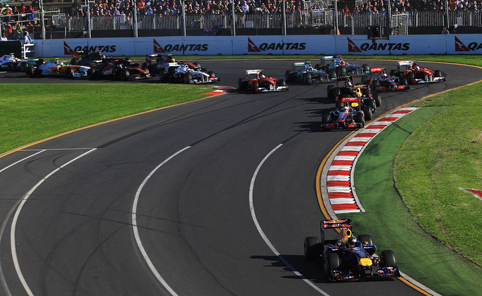

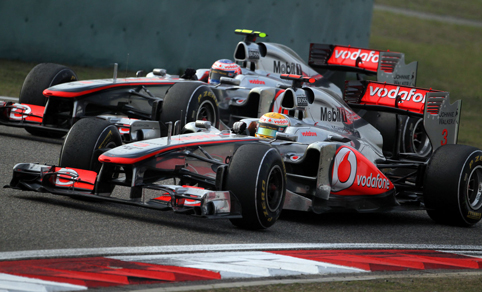
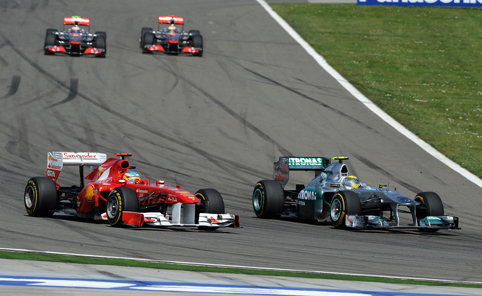




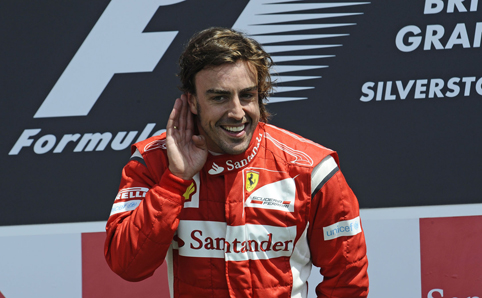



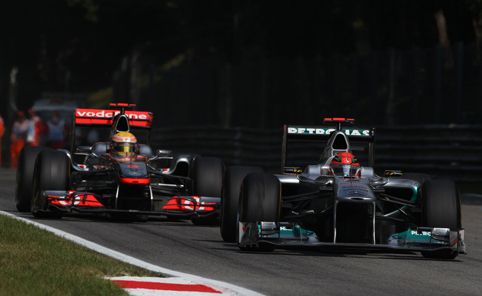






F1 Fanatic has posted its own season review. See the links for details:
http://www.f1fanatic.co.uk/category/2011-f1-season/2011-f1-season-review/
http://www.f1fanatic.co.uk/2011/12/17/moments-2011/
http://www.f1fanatic.co.uk/2011/12/16/2011-f1-driver-rankings-no1-sebastian-vettel/
http://www.f1fanatic.co.uk/2011/12/16/2011-f1-driver-rankings-no2-fernando-alonso/
http://www.f1fanatic.co.uk/2011/12/15/2011-f1-driver-rankings-no3-jenson-button/
http://www.f1fanatic.co.uk/2011/12/14/2011-f1-driver-rankings-no4-nico-rosberg/
http://www.f1fanatic.co.uk/2011/12/13/2011-f1-driver-rankings-no5-lewis-hamilton/
http://www.f1fanatic.co.uk/2011/12/12/2011-f1-driver-rankings-part-156/
http://www.f1fanatic.co.uk/2011/12/11/2011-f1-driver-rankings-part-2816/
The official F1.com season review:
http://www.formula1.com/news/features/2011/12/12871.html
http://www.formula1.com/news/features/2011/12/12872.html
Various links:
http://duncanblog.dailymail.co.uk/2011/11/f1-season-review-2011-dominant-vettel-hamilton-and-massa-and-bbc-vs-sky-.html
http://www.bbc.co.uk/blogs/jakehumphrey/2011/11/jake_humphreys_2011_season_rev.html
http://www.youtube.com/watch?v=NaJy97-KEQc
Formula One 2011 season review from Autosport.com:
http://f12011review.autosport.com/
http://plus.autosport.com/free/feature/4118/2011-formula-1-season-review-podcast/
First class review Leaf. Definitely has been such an exciting season. Amazing for some Vettel and crap for the likes of Hamilton.
I’m really looking forward to Kimi coming back and I really hope Shuie does something better this year or retires its just shameful watching him. : )